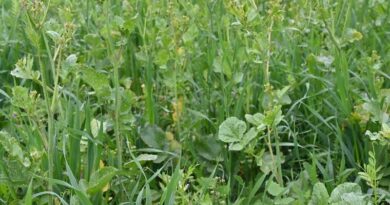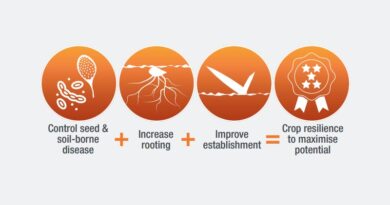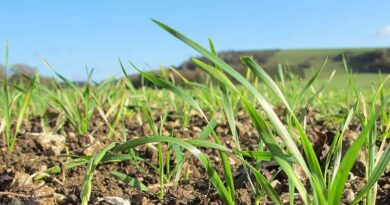Cover destruction to open up spring barley options
Over-wintered cover crops offer spring barley growers the chance to enhance soil structure and health, as well as capture nutrients in the field.
17 February 2021, UK: But much of that good preparation for the next crop may be undone, if the cover stays too long and delays spring barley establishment that could compromise yield.
With spring barley having an increasingly popular role for blackgrass control strategies on heavier soils, timely destruction of cover crops is even more essential.
Syngenta Seeds Technical Manager, Kathryn Hamlen, highlights that with spring barley’s relatively short growing season, it should be established as early as good seedbed conditions allow.
“It’s particularly the case with newer varieties, such as Laureate, that have the capability to tiller much more freely, and hence have far higher yield potential, compared to traditional varieties.”
Earlier planting also gives greater opportunity to encourage deeper rooting that will help in dry conditions and build stronger stems, she pointed out.
Cover crop benefits before spring barley include:
Protect and enhance soil structure
Capture and build soil nutrients
Give blackgrass control opportunity
Provide grazing for sheep
Create biodiversity habitat
Qualify for payments
“Cover crops contribute so many agronomic, economic and environmental benefits for regenerative agriculture systems. But the choice of what is grown and the way they are managed will have a huge influence on the success of spring barley establishment,” advised Mrs Hamlen.
Read the top tips on cover crop destruction from Kings Crops’ specialist Richard Barnes
Results from three years of Kings Crops’ trials in Scotland, by the James Hutton Institute at Invergowrie, demonstrated overwinter cover crops could consistently increase yields of a following spring barley, with a strong influence from the choice of cover sown.
The work indicated oil radish gave the greatest responses, particularly with the company’s Defender oil radish, giving an average 0.5 t/ha (6.5%) yield increase over the three seasons. A Kings’ tillage radish based mix primarily aimed to enhance soil structure also performed well.
Blackgrass target
More vigorous new spring barley varieties makes it an even more attractive proposition on blackgrass strategies, advocated Syngenta grassweed specialist, Georgina Wood. “In addition to the pre-establishment control of flushes of weeds, spring barley can have a far greater suppressive effect on blackgrass, compared to spring wheat.”

Syngenta trials have shown a 90% decrease in blackgrass ears at harvest from growing Propino spring barley, compared to a spring wheat crop.
“But to achieve the desired blackgrass suppression the spring barley must be competitive,” she added.
“In situations where spring barkey growth has been poor – particularly from late establishment – blackgrass populations at the end of the season can prove worse than the start.”
To enable early drilling and encourage greater tillering, Miss Wood highlighted cover crops must be destroyed in sufficient time to allow biomass die back, soils to dry sufficiently and create good seedbed conditions, before moisture becomes limiting in the late spring.

Cover crop trials at the Syngenta Rougham Innovation Centre, in Suffolk, showed spraying off in mid-February resulted in minimal negative yield impact on the spring barley. However, where covers were left until pre-drilling to spray off, yields were severely reduced, particularly with direct drilling establishment.
“The more vigorous and bigger biomass of rye and vetch cover proved to have a far greater impact from delayed destruction, compared to a more compact radish and oats,” she reported.
“In the season’s dry spring conditions, direct drilling after delayed cover destruction resulted in complete crop failure after rye and vetch; with cultivations pre-drilling the yield was still suppressed by 40%.”

Trials results (above) show potential issues of cover crops for subsequent spring barley establishment, depending on the cover crop mix, destruction timing and drilling techniques. Miss Wood recommended growers select cover crops carefully to maximise blackgrass control and other benefits, whilst still optimising spring barley potential.
“Where cover crops are going to be destroyed relatively early it’s important to get rapid biomass build up,” she highlighted.
“But where blackgrass is the target it is essential to be able to target weeds with the glyphosate burndown. Covers that open up with frost die-back could prove especially useful in future in front of spring barley.”
Also Read: Growers undercover investigations for spring crop establishment















